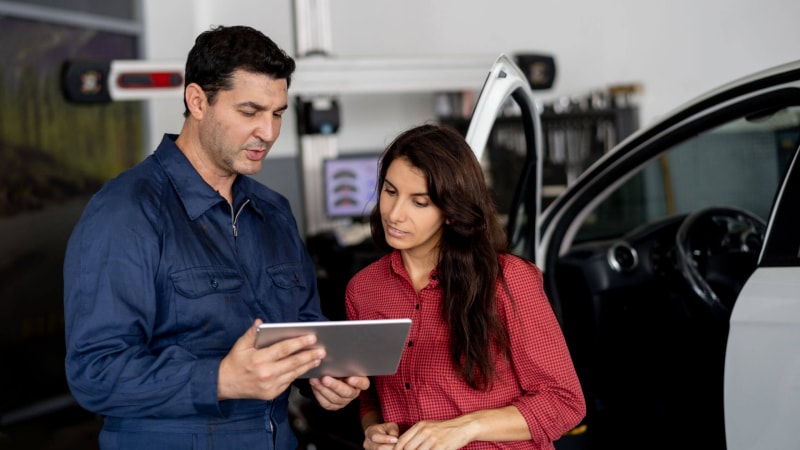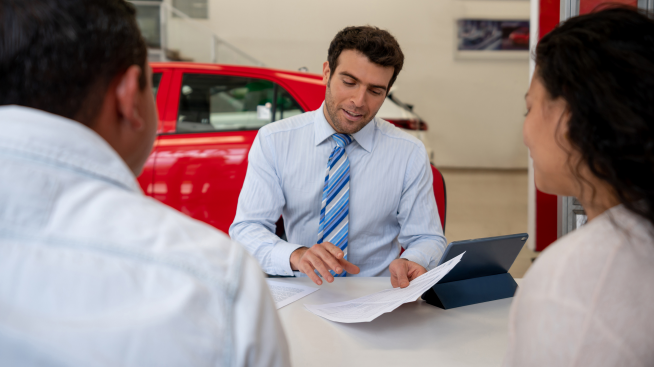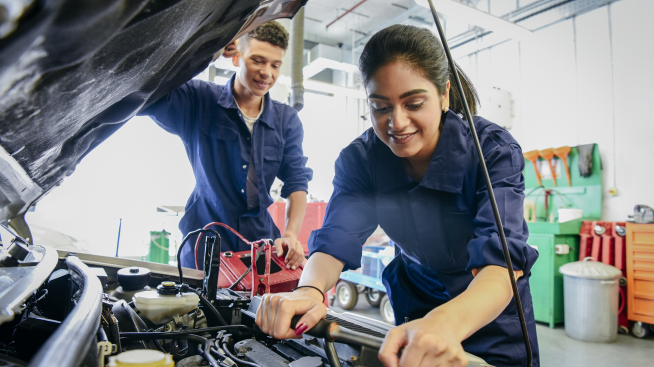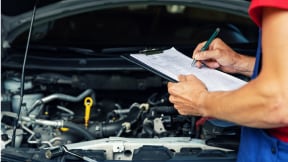Car maintenance checklist: All you need to know as a car owner

Your car is a powerful and expensive machine, and for it to operate at its best, requires routine maintenance. A car maintenance checklist can not only keep your car running smoothly, but it can also keep you and your family safe and help avoid major, costly repairs.
What is routine maintenance on a vehicle?
Routine maintenance is necessary maintenance done regularly on a vehicle to keep it functioning well. This type of maintenance is often preventative and can help keep your vehicle from having costly repairs in the future. It’s important to get into a consistent habit of maintaining your vehicle. Anytime you notice something strange in the way your car sounds, or it somehow feels off while driving, you or your mechanic should do a once-over to look for any potential problems.
While you can always take your car into a shop for maintenance, a lot of routine maintenance can be taken care of yourself, but make sure there are not impacts to your warranty if you do it yourself. If you can, make room in your budget for routine maintenance. It’s usually recommended to set aside about $100 per month, or $1,200 a year for simple maintenance, though this amount can obviously vary depending on the make and model of your vehicle, the age of your vehicle (older cars tend to require more maintenance), and how much work you expect to do each year.
If you want a clearer picture of the cost of regular maintenance for your particular vehicle, simply add up the total cost of maintenance your vehicle required in the last year and divide by twelve. This can give you a better idea of how much you should set aside per month to check everything off your vehicle maintenance checklist.
What is the most important maintenance on a car?
While all routine maintenance is important and should be taken care of, you should never skip these two items on your car checklist:
- Changing your oil
- Checking your tires for wear and tear
Oil change
Your oil is one of the most important factors in keeping your car running smoothly and efficiently. Engine oil is a lubricant, meaning that it reduces the friction from engine parts constantly grating against each other. Without consistent oil changes, you run the risk of severely damaging your engine.
Each month, make sure you check your engine oil levels. If you decide to do an oil change yourself, consult your vehicle’s owner manual for the type of oil required as well as the frequency that oil changes are required. You should replace the oil filter with every oil change as well.
Checking tires
Keeping your tires properly inflated can reduce the amount of wear to the tread, allowing them to last longer and keep you safer. Check your tire pressure monthly as well, making sure to check the owner’s manual for the recommended pressure amount. Inflate or deflate as needed to get to that recommended PSI amount.
If a tire has suddenly deflated, look for something that has punctured the tire, like a nail, then patch or replace the tire as needed.
Tires also need regular rotation and sometimes alignment. Alignment is when the front tires are realigned with the back tires, and rotation is the movement of your tires to create even tread. Both types of tire maintenance prevent uneven wear on the tread of your tires, making your car more balanced and less shaky.
What regular maintenance should be done on a car?
Besides regular oil changes and tire checks, below are a few more regular maintenance items you’ll want to cross off your car maintenance checklist. It’s advised to check your car owner’s manual for maintenance recommendations and frequency.
- Check your antifreeze and coolant
- Change the engine air filter
- Check brake fluid
- Check all the vehicle’s exterior lights
- Replace the windshield wiper blades
- Wash your vehicle
Check antifreeze and coolant
A car’s coolant and antifreeze fluids regulate the temperature of your engine, protecting it from extreme cold weather conditions as well as overheating. You’ll want to check your fluid levels every six months or so, and top the fluid off if levels get too low.
Be sure not to unscrew the coolant cap while the engine is running or hot, as you run the risk of getting burned. Instead, wait until the engine has cooled before checking the fluids.
Change the engine air filter
The engine air filter helps your engine run more efficiently by keeping out dirt and other particles. You’ll want to replace the filter once a year, or more frequently if the filter isn’t a white or off-white color.
Check brake fluid
Having the proper amount of brake fluid directly impacts the effectiveness of your brakes, so it’s important to regularly check these fluid levels as well. Checking the brake fluid is similar to checking antifreeze and coolant — simply unscrew the correct cap and top off the fluid to the guide line.
Check vehicle lights
Headlights and taillights are incredibly important when it comes to your own safety, especially when driving at night. Checking all of your vehicle lights on a regular basis may help keep you from an accident, not to mention a police ticket.
Test each lightbulb on your vehicle to see if it works or if the lenses need cleaning. If a light is dim or simply not working, you may need to replace either the bulb or its fuse.
Replace windshield wiper blades
Ineffective wiper blades make driving through rainy conditions difficult and dangerous. Since wiper blades are so inexpensive, it may be a good idea to quickly replace them at any time you feel they aren’t doing a good job or if they’re making scraping noises. At the very least, consider replacing them every six months or so.
Get a car wash
Regularly washing your car, especially during the winter when salt or ice melt dirties up the exterior and undercarriage, can actually reduce damage to your car. Not only will your car look nicer, but washing and polishing your car at least twice a year (and more in the winter if it’s covered in road salt) can protect the paint and undercarriage from ugly damage and rust.



